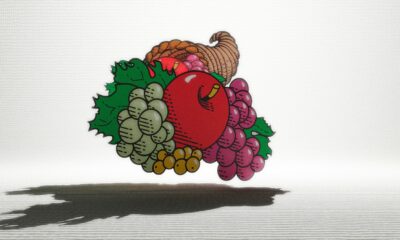Topic
Unfurling the Controversy: The Trump 2024 Flag Phenomenon

In the realm of American politics, symbolism often carries as much weight as policy discussions. One such symbol that has captured attention and stirred controversy is the Trump 2024 flag. Emblazoned with the name of the former President, Donald J. Trump, and the year 2024, this flag has become a potent emblem for a particular segment of the American populace. Its significance, however, extends far beyond mere fabric and stitching, delving into the complex web of political fervor, identity, and ideology that characterizes contemporary American society.
The Evolution of Political Symbolism
Flags have long been utilized as instruments of political expression, serving as rallying points for movements, nations, and ideologies. From the iconic stars and stripes of the American flag to the revolutionary banners of history, these symbols hold immense power in galvanizing communities and communicating shared values.
In the modern era, political campaigns have increasingly relied on symbols to convey messages and mobilize supporters. The Trump 2024 flag emerges within this context, representing not just a reelection bid but a broader cultural and ideological movement.
The Rise of Trumpism
The emergence of Donald Trump onto the political stage in 2016 marked a seismic shift in American politics. His unorthodox style, populist rhetoric, and “America First” agenda resonated deeply with millions of voters who felt marginalized by the political establishment. The fervent support for Trump transcended traditional party lines, coalescing into what became known as Trumpism.
Trump’s presidency was characterized by controversy, polarization, and a relentless assault on political norms. His supporters praised his boldness and willingness to challenge the status quo, while his detractors decried his divisive rhetoric and authoritarian tendencies.
As Trump’s first term drew to a close, speculation swirled regarding his intentions for the future. Would he seek reelection in 2024? The emergence of the Trump 2024 flag provided an early indication of the continued influence wielded by the former President and the enduring strength of the Trumpist movement.
Symbolism and Identity
The adoption of the Trump 2024 flag as a symbol of allegiance represents more than just support for a political candidate; it signals a deeper commitment to a particular set of values and beliefs. For many of its proponents, displaying the flag is an act of defiance against what they perceive as a liberal elite intent on eroding traditional American values.
Conversely, critics view the flag as a symbol of intolerance and bigotry, citing Trump’s inflammatory rhetoric and divisive policies as evidence of the dangers posed by Trumpism. The clash between these competing narratives has only served to heighten tensions and deepen divisions within American society.
The Commercialization of Politics
The Trump 2024 flag has also become a lucrative commodity in the realm of political memorabilia. From online retailers to roadside vendors, the flag is readily available for purchase, allowing supporters to proudly display their allegiance while providing entrepreneurs with a profitable opportunity to capitalize on political fervor.
This commercialization of politics raises important questions about the commodification of symbols and the influence of money in shaping political discourse. Critics argue that the proliferation of Trump 2024 flags serves to further entrench political tribalism and detract from substantive debates about policy and governance.
Legal and Ethical Considerations
The use of political symbols such as the Trump 2024 flag raises a host of legal and ethical considerations. While the First Amendment protects the right to freedom of expression, including the right to display political symbols, conflicts can arise when these expressions infringe upon the rights of others or incite violence.
Instances of flag-related controversies, including clashes between supporters and opponents at political rallies and protests, highlight the potential for symbols to serve as flashpoints for conflict. Lawmakers and legal scholars continue to grapple with the challenge of balancing the protection of free speech with the need to maintain public safety and order.
The Future of Political Symbolism
As the political landscape continues to evolve, the role of symbols in shaping public discourse and mobilizing support is likely to remain a prominent feature of American politics. Whether it’s the Trump 2024 flag or other emblems of political allegiance, these symbols serve as potent reminders of the power of identity and ideology in shaping the course of history.
In the years to come, the legacy of the Trump 2024 flag will be debated and dissected by historians, political scientists, and commentators seeking to understand its significance in the broader context of American democracy. Whatever conclusions may be drawn, one thing is certain: the Trump 2024 flag has left an indelible mark on the political landscape, serving as a testament to the enduring influence of Donald Trump and the forces of Trumpism in American society.
Conclusion
The Trump 2024 flag represents far more than a mere piece of fabric; it embodies the hopes, fears, and aspirations of millions of Americans. Whether viewed as a symbol of resistance or a rallying cry for change, its presence serves as a stark reminder of the deep divisions that continue to define American politics.
As the nation grapples with the challenges of the present and confronts the uncertainties of the future, the significance of the Trump 2024 flag will persist, serving as a touchstone for debates about identity, ideology, and the soul of American democracy. Its legacy, like that of the man whose name it bears, will be hotly contested and fiercely debated for years to come.
Topic
Uncuymaza: A Living Tapestry of Culture and Identity

Uncuymaza is more than just a craft; it is a vibrant expression of culture and identity. This traditional weaving technique hails from the indigenous communities of Peru, reflecting their unique artistic skills and deep-rooted heritage. Through its intricate patterns and vivid colors, uncuymaza serves as a visual language that communicates stories, beliefs, and traditions passed down through generations. In this article, we will delve into the fascinating world of uncuymaza, exploring its origins, cultural significance, and its evolution in the modern age.
Origins of Uncuymaza
The origins of uncuymaza are intertwined with the history of Peru’s indigenous peoples. For centuries, weaving has been an integral part of Andean culture, with techniques and patterns varying across regions. Uncuymaza, in particular, is believed to have originated in the highlands, where the harsh landscapes and climates demanded both functionality and beauty in textiles. The name itself carries deep cultural connotations, derived from Quechua words that evoke the act of creating something with care and intention.
The early weavings of uncuymaza were crafted from natural fibers like alpaca and llama wool, dyed with plant-based pigments that produced a rich palette of colors. These textiles were not merely utilitarian; they served as symbols of status, ceremonial offerings, and even as a form of currency. Each piece told a story, encoding information about the wearer’s community, social standing, and life events.
The Cultural Significance of Uncuymaza
Uncuymaza is more than an art form; it is a repository of cultural identity and collective memory. Every thread, color, and motif has a meaning, often representing elements of nature, cosmology, and community life. For instance, the stepped patterns frequently found in uncuymaza designs symbolize mountains, a sacred element in Andean cosmology. Similarly, the use of vibrant reds and yellows often signifies vitality and the life-giving force of the sun.
This weaving tradition also plays a crucial role in social and spiritual practices. Textiles are used in rituals, weddings, and other communal celebrations, underscoring their importance in marking life’s milestones. Uncuymaza is also a medium through which knowledge and skills are transmitted. The process of learning to weave is itself a rite of passage, connecting younger generations to their ancestors.
The Artistry of Uncuymaza
The creation of uncuymaza is a labor-intensive process that requires exceptional skill and patience. Artisans begin by shearing alpacas or llamas, spinning the wool into yarn, and dyeing it with natural pigments derived from plants, minerals, and insects. The dyeing process is itself an art, involving precise techniques to achieve the desired hues.
Once the materials are prepared, the weaving begins. Traditional backstrap looms are often used, allowing the weaver to control the tension and intricacy of the patterns. Each design is pre-planned, with weavers drawing on their deep knowledge of symbolism and aesthetics to create textiles that are both beautiful and meaningful.
The finished pieces are stunning works of art, featuring geometric motifs, vibrant color contrasts, and a tactile richness that speaks to the care invested in their creation. No two pieces of uncuymaza are exactly alike, as each reflects the individuality and creativity of its maker.
The Evolution of Uncuymaza in the Modern World
While uncuymaza remains deeply rooted in tradition, it has also adapted to the changing dynamics of the modern world. Today, many artisans are finding innovative ways to keep their craft alive while reaching new audiences. This includes creating contemporary designs that appeal to global markets, incorporating uncuymaza techniques into fashion and home decor, and using digital platforms to share their work with the world.
Nonprofit organizations and cooperatives play a vital role in this evolution, providing artisans with resources, training, and access to fair trade markets. These initiatives not only help sustain the craft but also empower indigenous communities economically and socially.
Despite these advancements, challenges remain. Artisans must contend with the pressures of mass production and the undervaluation of handmade goods. Preserving the authenticity of uncuymaza while meeting the demands of a global market is a delicate balance that requires both innovation and respect for tradition.
Uncuymaza and Sustainability
Uncuymaza exemplifies sustainability in its use of natural materials and dyes, as well as its emphasis on quality and durability. In a world increasingly dominated by fast fashion, this traditional craft offers a model of thoughtful and ethical production. By choosing uncuymaza textiles, consumers can support not only the artisans but also a broader movement towards sustainable and culturally conscious consumption.
Efforts to promote uncuymaza as a sustainable practice are gaining momentum. Workshops and cultural exchange programs educate people about the environmental and social benefits of this craft, encouraging a deeper appreciation for its value. These initiatives also highlight the interconnectedness of cultural preservation and environmental stewardship.
The Future of Uncuymaza
The future of uncuymaza lies in its ability to bridge tradition and modernity. As more people recognize the beauty and significance of this art form, opportunities for its preservation and growth continue to expand. Educational programs, tourism, and collaborations with designers and artists offer promising avenues for sustaining uncuymaza while keeping it relevant in a rapidly changing world.
At the heart of these efforts is the commitment of the artisans themselves. Their dedication to their craft, their communities, and their heritage ensures that uncuymaz’a will remain a vibrant and meaningful expression of culture for generations to come.
Conclusion
Uncuymaza is a testament to the enduring power of tradition and creativity. It is more than a weaving technique; it is a living narrative of identity, history, and artistry. As we celebrate the beauty and significance of uncuymaza, we also honor the people and cultures that sustain it. In every thread and pattern, uncuymaz’a weaves a story that connects us to the past while inspiring a future where tradition and innovation coexist harmoniously.
Topic
Exhentaime: Revolutionizing Time Management for a Balanced Life

In today’s fast-paced world, where every moment seems packed with tasks, responsibilities, and commitments, the need for effective time management has never been greater. But what if we shifted our focus from merely managing time to truly optimizing it? Enter Exhentaime, a time management method that combines traditional techniques with modern insights to help individuals streamline their daily routines, prioritize their goals, and restore balance to their lives. Rather than focusing on the quantity of tasks, Exhentaime emphasizes the quality of time spent and the intention behind each action.
The Birth of Exhentaime
Exhentaime is a modern-day adaptation of traditional time management practices, blending age-old wisdom with contemporary understanding of mental well-being, work-life balance, and personal growth. The term itself is a fusion of “Exhent,” which suggests a state of clarity or mindfulness, and “aime,” representing the French word for “love” or “care.” This symbolic union represents a time management technique rooted in intentionality, self-awareness, and compassion.
At its core, Exhentaime challenges the traditional mindset of filling every minute with activity. Instead, it calls for a more thoughtful approach—one that involves reflecting on your values, goals, and priorities before deciding how to allocate your time. The method seeks to create a harmonious balance between productivity and tranquility, ensuring that the time you invest is both purposeful and rejuvenating.
Intentionality Over Busyness
In a world where “busy” has become synonymous with “productive,” Exhentaime offers a refreshing perspective. The method encourages individuals to stop chasing after constant activity and instead focus on the tasks that align most closely with their long-term aspirations.
Intentionality in time management refers to consciously deciding what deserves your attention. Are you filling your schedule with activities that help you progress toward your goals? Are you spending time on things that nourish your mind and spirit? Or are you simply responding to external demands without considering their true value?
Exhentaime empowers you to answer these questions by providing strategies for prioritization. By focusing on what truly matters, the method advocates for quality over quantity, guiding users to create space for both productivity and creative pursuits. This way, every task you engage in serves a greater purpose, leading to a more fulfilling and balanced life.
A Holistic Approach to Time Management
Unlike conventional time management methods that focus solely on task completion, Exhentaime takes a holistic approach, incorporating aspects of personal growth, well-being, and mental clarity. It acknowledges that time management is not just about getting things done, but also about preserving energy and mental health.
Exhentaime encourages individuals to assess their routines not just for their efficiency but also for their emotional and psychological impact. Are the tasks you’ve set for yourself contributing to your personal growth, or are they draining your energy? The method suggests integrating breaks, moments of reflection, and leisure activities into your schedule, which are just as essential to your overall productivity and creativity as work-related tasks.
This method goes beyond simply optimizing working hours; it creates space for relaxation, self-care, and mindful practices, all of which contribute to a healthier and more balanced lifestyle.
Crafting a Personalized Exhentaime Routine
One of the most appealing aspects of Exhentaime is its adaptability. Unlike one-size-fits-all time management systems, Exhentaime can be tailored to suit individual needs, schedules, and life stages. The key lies in understanding your unique values, priorities, and rhythms.
To begin crafting your Exhentaime routine, start by identifying your core values. What is most important to you in life? Whether it’s career growth, personal relationships, health, or creativity, identifying your values allows you to align your daily tasks with these principles. This brings a sense of fulfillment to even the most mundane tasks, as they become a part of a larger vision.
Next, Exhentaime encourages breaking down your day into segments that honor both your work and personal needs. Schedule time for reflection, relaxation, or engaging in activities that reignite your passions. The idea is not to overcrowd your calendar with appointments but to create a rhythm that balances output with restoration.
As with any new method, it’s important to start small. Introduce Exhentaime into your daily life in manageable increments, gradually allowing it to evolve with your changing priorities. This gradual approach prevents overwhelm and ensures long-term sustainability.
The Power of Reflection and Self-Awareness
Exhentaime places great importance on self-awareness, encouraging individuals to pause regularly and reflect on their goals, accomplishments, and emotional states. This practice of reflection helps to identify any misalignments between daily activities and long-term aspirations.
Journaling is one of the most powerful tools within Exhentaime. Taking a few minutes each day to write down thoughts, feelings, and observations not only helps clarify what’s important but also creates a sense of ownership over your time. It allows you to see patterns in your behavior, recognize any time-wasting habits, and course-correct where necessary.
Reflection also supports mental well-being, providing an opportunity to release any mental clutter and refocus on what truly matters. By incorporating self-awareness into time management, Exhentaime nurtures a sense of inner peace and direction.
Exhentaime and Personal Growth
Personal growth is an integral component of Exhentaime. The method does not solely focus on external productivity but also on cultivating internal growth and self-improvement. It encourages you to set intentional, meaningful goals that align with your values, fostering a deep sense of purpose in your daily activities.
By engaging in time management practices that are both strategic and mindful, Exhentaime helps users discover their potential, strengthen their decision-making abilities, and build resilience in the face of challenges. This not only enhances productivity but also promotes long-term success and fulfillment.
Incorporating Exhentaime into your life can lead to profound personal transformation, as it cultivates qualities such as discipline, focus, and self-compassion. Over time, you may notice an increased ability to prioritize your time wisely, a stronger connection with your deeper desires, and a greater sense of balance in all aspects of your life.
Creating Space for Creativity and Tranquility
In the modern world, many people feel overwhelmed by the constant demands of work, family, and social commitments. Exhentaime provides a remedy for this by emphasizing the importance of creating space for creativity and tranquility amidst the busy schedule.
Creativity is often stifled by the pressure to “do more,” but Exhentaime believes that in order to be truly creative, we must give ourselves the freedom to think, explore, and rest. Whether you’re an artist, entrepreneur, or simply someone trying to bring more innovation into your life, Exhentaime encourages you to build time for creative expression into your routine.
Likewise, tranquility is essential for mental clarity and stress reduction. By scheduling time for solitude, nature walks, or simply sitting in stillness, Exhentaime fosters an environment where peace can thrive even in the midst of busy days.
The Broader Impact of Exhentaime
The broader impact of Exhentaime extends beyond the individual. By promoting intentionality, balance, and mindfulness, Exhentaime has the potential to transform workplace cultures, families, and communities. In organizations, employees who adopt Exhentaime may experience less burnout and greater overall satisfaction, as they are encouraged to prioritize their well-being alongside productivity.
Exhentaime also promotes a more sustainable lifestyle, one where individuals do not view time as a scarce resource to be exploited, but rather as a valuable asset to be invested wisely. This shift in mindset can lead to more mindful consumption, healthier work habits, and a greater sense of global responsibility.
Transforming Our Perception of Productivity
The ultimate goal of Exhentaime is to transform our perception of productivity. In a world that often prioritizes speed and output, Exhentaime reminds us that productivity is not just about getting more done; it’s about getting the right things done with intention and purpose. By embracing this new approach, we can break free from the cycle of busyness and cultivate a life that reflects our deepest values and aspirations.
Incorporating Exhentaime into your life allows you to manage time in a way that supports personal growth, nurtures creativity, and ensures that your daily actions align with your long-term goals. By prioritizing meaningful tasks and engaging in regular self-reflection, Exhentaime enables individuals to live more fulfilling, balanced lives—one where time becomes a tool for transformation rather than a source of stress.
Conclusion
Exhentaime is more than just a time management method; it’s a philosophy for living with intention, purpose, and balance. By embracing this approach, individuals can free themselves from the tyranny of constant busyness and rediscover the joy of living in alignment with their values. Exhentaime encourages us to take control of our time, cultivate self-awareness, and create space for both productivity and relaxation. In a world that constantly demands more, Exhentaime is the answer to living a life that truly matters.
Topic
AI Video Creation for Social Media: Boost Your Engagement Today

Harnessing the power of artificial intelligence (AI) in video creation has revolutionized the way brands engage with their audience on social media platforms. In this digital era, where visual content is king, AI video creation offers a dynamic and efficient means to captivate viewers and boost engagement. From personalized storytelling to targeted messaging, the potential of AI in video content creation is vast. This article delves into the realm of AI video creation for social media, exploring the benefits, best practices, tools, and strategies to effectively leverage this innovative technology and amplify your online presence.
Introduction to AI Video Creation for Social Media
In a world where cat videos reign supreme, mastering the art of AI video creation for social media can give your content the edge it needs to stand out in the algorithmic jungle.
AI isn’t just a buzzword thrown around by tech enthusiasts—it’s the secret sauce behind creating captivating video content. From automated editing to personalized recommendations, AI is the behind-the-scenes wizard that makes your videos pop.
Importance of Video in Social Media Marketing
Let’s face it: text posts are so 2000-and-late. Video is the king of content on social media, with studies showing that video content marketing drives more engagement, shares, and overall love from the algorithm gods.
Benefits of Using AI for Video Content
AI isn’t just here to steal our jobs – it’s here to make our lives easier, especially when it comes to creating killer video content for your social media feeds.
Say goodbye to endless hours spent tweaking transitions and color grading. AI-powered tools can streamline your video production process, leaving you more time to perfect that TikTok dance routine.
Personalization and Targeted Content Creation
Gone are the days of generic content that speaks to no one in particular. AI can help you create personalized videos tailored to your audience’s preferences, ensuring that each view feels like a warm hug from the internet.
Best Practices for AI Video Creation
While AI is a powerful ally in your video creation journey, knowing how to wield this digital sword is key to unlocking its full potential for your social media strategy. Not all AI tools are created equal. Finding the right one that aligns with your creative vision and technical needs can make all the difference between a viral hit and a content flop.
Optimizing Video Elements for Maximum Impact
From eye-catching thumbnails to snappy captions, every element of your video plays a crucial role in captivating your audience’s attention. Learn how to optimize these elements for maximum impact and engagement.
Tools and Platforms for AI Video Creation
With a smorgasbord of AI video creation platforms at your disposal, choosing the right one can feel like picking the best flavor at an ice cream parlor. Here’s a scoop of information to help you make an informed decision.
From beginner-friendly platforms to advanced editing suites, the world of AI video creation is vast and varied. If you’re looking for the perfect tool, you can use this AI video creation tool that takes your content to the next level. It automatically writes the script, adds visuals generated with AI, incorporates voiceovers, subtitles, music, and more. This powerful tool makes creating publish-worthy videos for any topic effortless and efficient, whether you’re crafting a TikTok sensation or a professional ad campaign.
Maximizing Engagement Through AI Video Content
Understanding Social Media Algorithms and Video Engagement
Ever wondered why your cat video gets more likes than your heartfelt posts? It’s not your cat’s charm; it’s social media algorithms at play. Dive into the world of algorithms and learn how to crack the code for boosting video engagement.
AI isn’t just for robots; it’s your secret weapon for creating thumb-stopping videos. From personalization to data-driven insights, discover how AI can supercharge your video content and keep your audience hooked.
Case Studies: Successful AI Video Campaigns
Analysis of Real-World Examples of AI Video Success
Take a peek behind the curtain of top-performing AI video campaigns. Learn what makes them tick, their secret sauce for success, and how you can apply these strategies to level up your own video game.
Forget textbooks; real-life examples are where the juicy lessons hide. Uncover the key takeaways from successful AI video campaigns and walk away armed with actionable insights to skyrocket your engagement.
Future Trends in AI Video Creation for Social Media
Emerging Technologies Shaping the Future of AI Video Creation
Buckle up for a wild ride into the future of video creation. From deepfakes to VR integration, explore the cutting-edge technologies that will shape the way we create and consume AI-driven videos on social media.
Predictions for the Evolution of AI Video in Social Media Marketing
Crystal balls are so last season. Discover the top predictions for AI video evolution in social media marketing. Will AI take over the world, or will we still be the masters of our video destiny? Only time will tell.
As the landscape of social media continues to evolve, integrating AI video creation into your marketing strategy can be a game-changer for enhancing engagement and driving results. By embracing the efficiency, personalization, and impact that AI-powered videos offer, brands can stay ahead of the curve and connect with their audience in more meaningful ways. Embrace the future of video content creation with AI technology and watch your social media engagement soar to new heights.

 Nail Salons9 months ago
Nail Salons9 months agoNail Salons in Ridgewood, NJ

 Topic7 months ago
Topic7 months agoMakoshake: A Popular Model and Cam Girl

 Topic8 months ago
Topic8 months agoEvolved Fights: Where Mixed Wrestling Meets Adult Entertainment

 Business7 months ago
Business7 months agoSkyWestOnline: Empowering Employees with Essential Resources

 Topic9 months ago
Topic9 months agoEmbracing the Paradox of Retroya: Where Past and Future Collide

 Topic8 months ago
Topic8 months agoFruit of the Loom: Cornucopia Logo Fact Check

 Uncategorized8 months ago
Uncategorized8 months agoExploring Rutube: Russia’s Dynamic Video Platform

 Nail Salons9 months ago
Nail Salons9 months agoNail Salons in Meriden, CT















